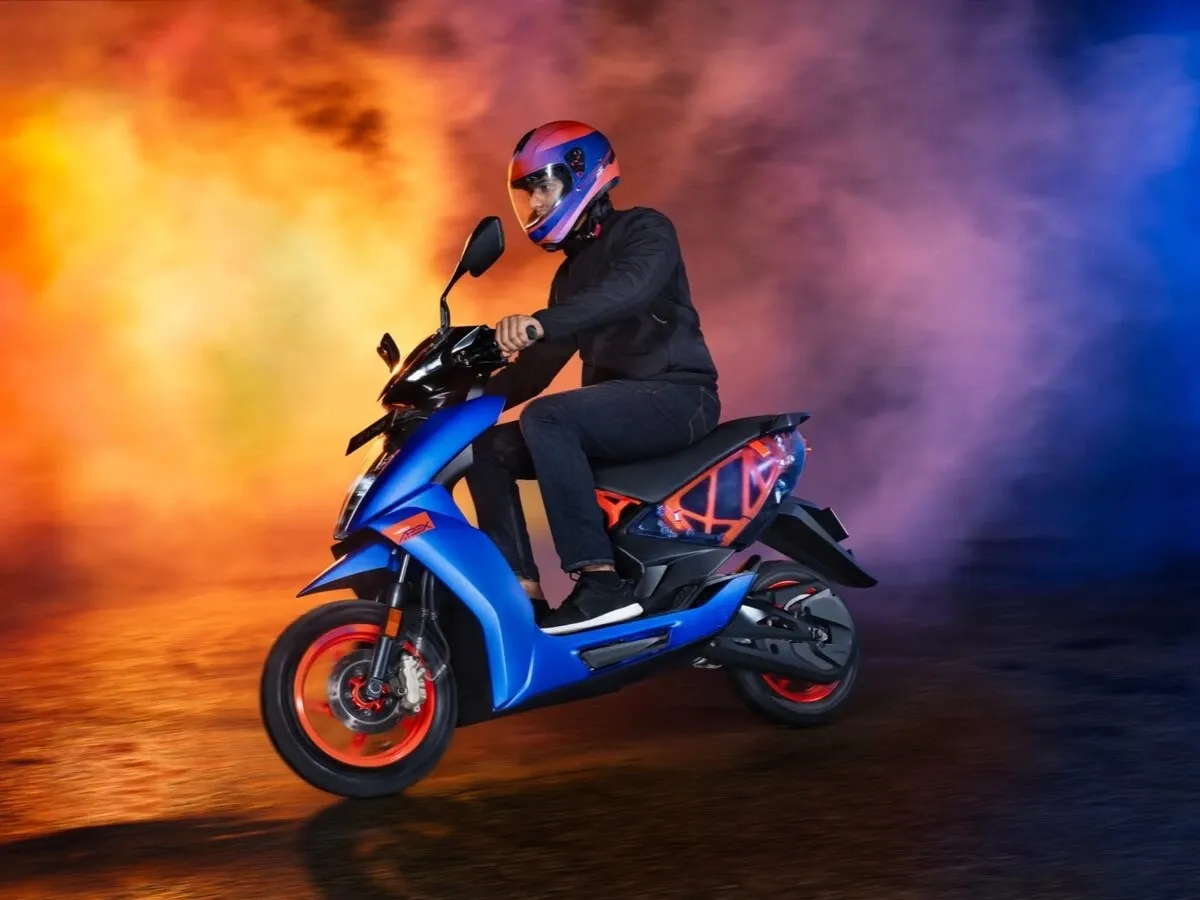Market News
Ather Energy shares jump over 5%, hit all-time high ahead of Q1 results; what you need to know
.png)
5 min read | Updated on August 04, 2025, 11:20 IST
SUMMARY
Ather Energy Q1 results: Analysts note that Ather is the fourth largest EV two-wheeler (e2W) manufacturer in India, with around a 14% market share in terms of total e2W sold in 1QFY26 per the Vahan database. Ather’s volumes have grown at a compound annual growth rate (CAGR) of 77% over FY22-25, with EBITDA margin improved from -64% to -26%.
Stock list

Ather listed its shares on Tuesday, May 6, 2025, with a premium of over 2% against the issue price of ₹321.
The stock price jumped as much as 5.38% to hit a record high of ₹366 on the NSE.
On the listing day, shares started the trade at ₹326.05, up 1.57% from the issue price on the BSE. Later, it climbed 3.70% to ₹332.90.
On the NSE, it listed at ₹328, a premium of 2.18%.
Ather Energy's initial public offering (IPO) got subscribed 1.43 times on the closing day of bidding, backed by oversubscription in QIB and retail investor categories.
The ₹2,981 crore initial share sale had a price band of ₹304-₹321 apiece.
This was the first mainboard public issue of the current financial year, 2025-26.
The initial public offering (IPO) was a combination of a fresh issue of equity shares worth ₹2,626 crore and an offer-for-sale of 1.1 crore equity shares by promoters and other shareholders.
This was the second electric two-wheeler company to go public after Ola Electric Mobility floated its ₹6,145 crore IPO in August last year.
Recently, HSBC, in its note, highlighted a slew of points on why they are positive on the company and stock.
They note that Ather is the fourth largest EV two-wheeler (e2W) manufacturer in India, with around a 14% market share in terms of total e2W sold in 1QFY26 per the Vahan database. Ather’s volumes have grown at a compound annual growth rate (CAGR) of 77% over FY22-25, with EBITDA margin improved from -64% to -26%.
"We believe Ather’s product quality and technology leadership, built over the past 10+ years, is difficult to replicate even for rivals with deep pockets, Yogesh Aggarwal, Head of Research, India at HSBC, wrote in a July 31, 2025, report co-authored by analysts Vishal Goel and Vipul Agrawal.
The research report said, "Ather is one of the leading e2W players in India with a resilient market share over the past few years, supported by a superior product offering along with a strong focus on the premium e2W segment. Despite challenges from aggressive competitors—including Bajaj and TVS—Ather, unlike Ola Electric, which has suffered from market share losses, has maintained and even expanded its market share."
Besides, Ather is also expanding its distribution and sales reach in India, supported by improved liquidity after the IPO in May 2025. The upcoming launch of the new EL production platform in August this year to target the economy scooter segment should also be a market share tailwind.
However, analysts said that an anaemic increase in EV penetration in India remains a key risk. In the near term, "we believe Ather’s stock will be driven by its relative performance rather than industry growth. Any acceleration in e2W penetration should be a significant upside risk to earnings and valuation, as Ather is a pure-play e2W stock," the report said.
EBITDA breakeven in 4QFY27e
Despite no production-linked incentive (PLI) subsidy, Ather reported a healthy 19% adjusted gross margin in FY25, with an EBITDA margin of -26% due to lower volumes.
"We forecast an FY25-28 revenue CAGR of 47% and expect EBITDA breakeven by 4QFY27e. In FY28, we forecast a gross margin of 28% and an EBITDA margin of around 4%, when the monthly volume run rate should hit nearly 45,000, up from the current 14,000. By that time, the first phase (500,000 capacity) of the company’s new Maharashtra plant will be ready to handle additional volumes," the HSBC report said.
Despite these positives, there are a range of downside risks to the company and stock price too. They are as below.
Key downside risks
◆ Slower-than-expected adoption of e2Ws due to range anxiety, battery concerns, and resale value issues.
◆ Loss of market share due to increasing competition (e.g., aggressive Honda EV ramp-up) and launch of vehicles by rivals.
◆ The company’s network expansion rollout is slower than expected.
◆ Lower-than-expected adoption and cost savings from the new EL platform.
◆ Hero MotoCorp (HMCL) is the largest shareholder (along with the two founders) and holds around a 30.9% stake in the company. There is a risk of potential conflict of interest, as HMCL has e2Ws from its VIDA brand, and HMCL has invested in Zero Motorcycles and Gogoro Inc., both in the e2W space.
◆ Negative movement in battery prices, i.e., a rise in battery prices, may adversely impact EV penetration.
◆ Potential removal of incentives/subsidies by the government could make e2Ws costlier than ICE 2Ws. For instance, if the normalisation of GST on EVs is faster than the BOM reduction, this could significantly impact profitability.
◆ Any intensified geopolitical conflicts could make the availability of imported raw materials more difficult.
ICE 2Ws" refers to internal combustion engine two-wheelers.
Ather Energy Q4 FY25 Numbers
Electric two-wheeler maker Ather Energy narrowed losses to ₹234.4 crore in the March quarter of the previous fiscal year.
The company had posted a loss of ₹283.30 crore in the year-ago period, it said in a regulatory filing.
The income from operations during the quarter rose 29.5% to ₹676.1 crore from ₹523.4 crore a year ago, it said.
For 2024-25, Ather Energy posted a net loss of ₹812 crore as compared to ₹1,059.70 crore a year ago.
Related News
About The Author
Next Story



